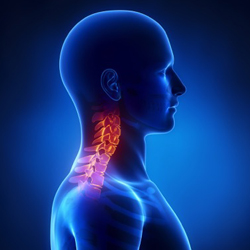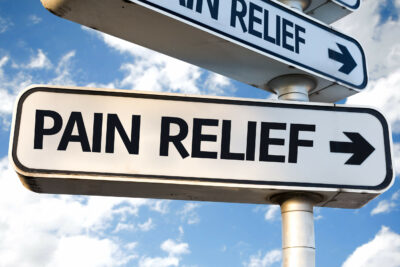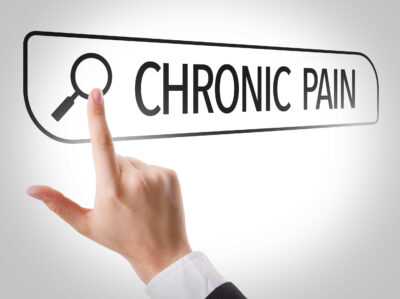Degeneration of the Cervical Spine

Cervical spondylotic myelopathy (CSM) is a neck condition that arises when the spinal cord becomes compressed due to the wear-and-tear of the spine caused by aging.
Cervical spondylotic myelopathy commonly occurs in people over the age of 50.
Because the spinal cord carries nerve impulses to many regions in the body, guests with CSM can experience a wide variety of symptoms including:
- Weakness and numbness in the hands and arms
- Loss of balance and coordination
- Loss of fine motor skills
- Neck pain or stiffness
The spine is made up of 24 bones, vertebrae, stacked on top of one another. The spinal cord extends from the skull to the lower back and travels through the middle of the stacked vertebrae called the central canal. Nerves branch out from the spinal cord through openings in the vertebrae and carry messages between the brain and muscles. The seven small vertebrae that begin at the base of the skull and form the neck comprise the cervical spine. In between the vertebrae are intervertebral discs, which consist of a flexible outer disc and a soft, jelly-like center. As the discs in the spine age, they lose water content and flexibility, resulting in the collapse of the disc spaces and heights and the vertebrae move closer together. The body forms more bone, bone spurs, around the disc to strengthen the spine, which also stiffens the spine and compresses the spinal cord. These degenerative changes in the cervical spine are spondylosis, CSM.
After discussing medical history, symptoms and general health with the DOC orthopedic specialist, he or she will conduct a thorough examination of the neck, shoulders, arms, hands, and legs. X-rays provide images of dense structures and show the alignment of the vertebrae. An MRI scan creates better images of the body’s soft tissues and can show spinal cord compression to help determine whether symptoms are caused by damage to soft tissues, such as a bulging or herniated disc. In milder cases, initial treatment for CSM may be nonsurgical, including physical therapy to help relieve pain, strengthen neck muscles and increase flexibility. The goal of nonsurgical treatment is to decrease pain and improve the guest’s ability to perform daily activities. If nonsurgical treatment does not relieve symptoms, the DOC surgeon will discuss surgical options. There are several procedures that can be performed to help relieve pressure on the spinal cord, which are predicated by the symptoms and severity. For more information on Neck and Spine conditions, please visit us here.
For more information on the cost of care, click here.




